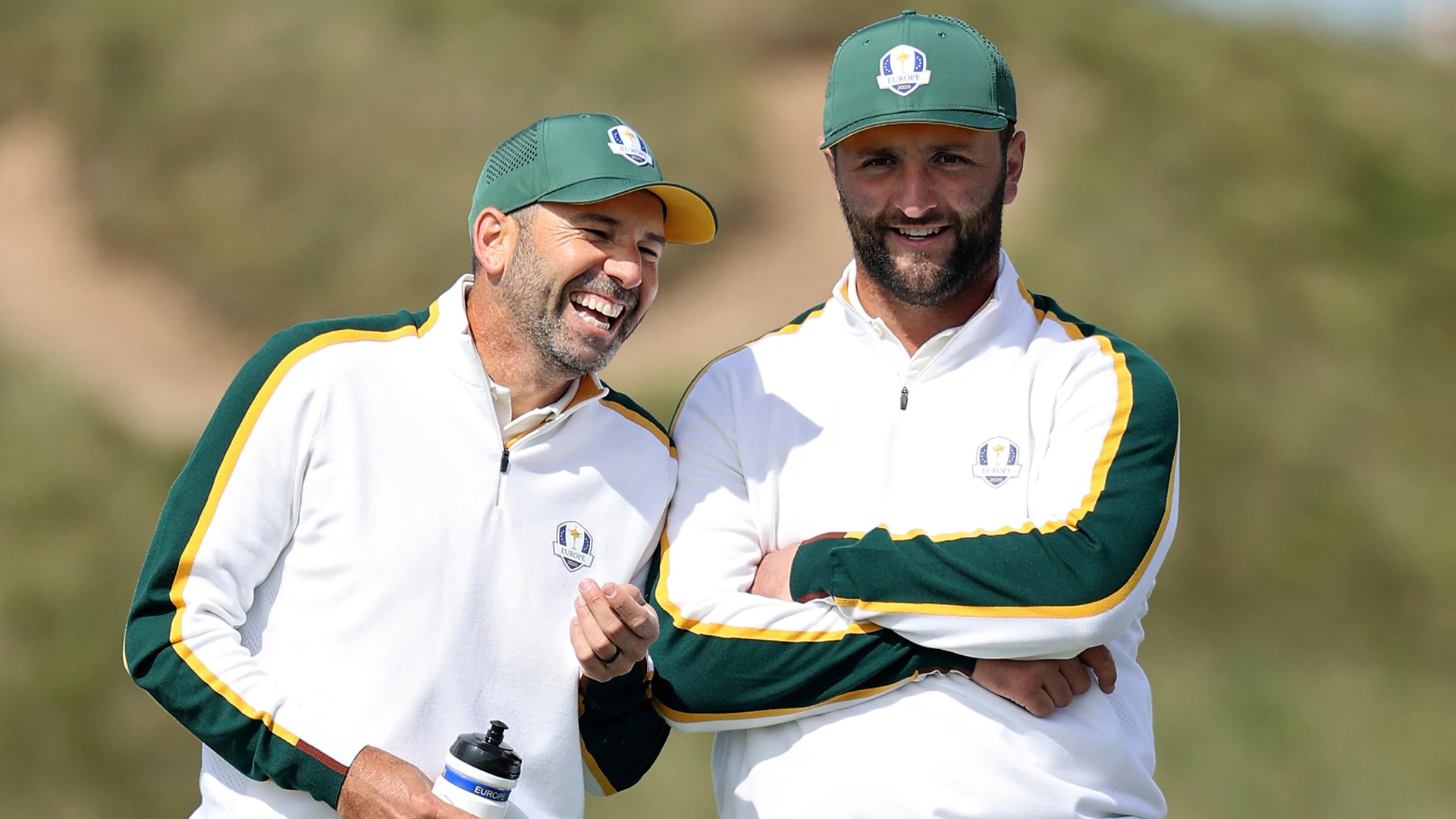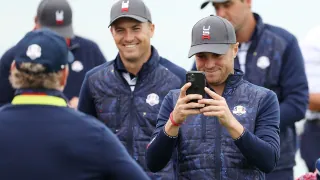As 2020 Ryder Cup captains narrow pairings, they haven’t deviated much from their guts

SHEBOYGAN, Wis. – Steve Stricker’s often-repeated goal as U.S. Ryder Cup captain has been to over-prepare, which is exactly what one would expect from the father of two who is steeped in midwestern sensibilities and blue-collar workmanship.
No stone unturned, no surprises, no detail too small. The U.S. team might be outplayed this week, again, but they won’t be out-planned and three days of practice with three different winds at Whistling Straits hasn’t altered the foundation of that blueprint.
“I was pretty set in my mind,” Stricker said when asked if his original plan for this week’s pairings remained unchanged. “I always had some questions whether it’s the right thing or not. I’ve done a lot of homework, talked to my assistant captains a bunch, talked to the players a bunch.”
In many ways, his European counterpart, Padraig Harrington, is cut from the same sensible mold, so it should be no surprise that he had a similar air of confidence early Wednesday.
“My picks are definitely based on the right partnerships, what we would have had in mind but narrowed down now. As we’ve got here, narrowed down even further,” Harrington said. “I wouldn’t think a lot is changing in my head and my vice captains’ head between now and Friday, no.”
There’s no bravado in either captain’s confidence. Both have spent three years analyzing and agonizing over potential picks and pairings. If a captain is panicking on Wednesday, their team has already lost.
But the hard work has already been done for both Stricker and Harrington. The picks were selected with specific pairings in mind and there are certainly no surprises at Whistling Straits, which, by Ryder Cup standards, is a straightforward and known commodity.
For Stricker, much of that trust in his plan is born from at least two built-in pairings in Jordan Spieth-Justin Thomas and Xander Schauffele-Patrick Cantlay. Although there are sure to be contingencies to mix and match those players with others, expect the U.S. side to lean heavily on both pairings on Friday.
To round out Stricker’s Day 1 foursomes pairings, he could also turn to Brooks Koepka-Tony Finau, who provided the U.S. a rare highlight three years ago in Paris with a Day 1 fourballs victory and have been paired in practice together this week. And based on the practice pairings, it appears Dustin Johnson and Collin Morikawa could provide the American team a new-look tandem.
None of this should suggest that either captain is entrenched with pairings or plans. Intractability is as dangerous for a captain as indifference.
“Everything looks really good on paper at times, but then you’re like, Oh, what if something happens kind of thing. You’ve always got to be prepared for the what-ifs. So that’s what we’re doing, as well,” Stricker said.
On this, Harrington might have the upper hand. Having played in six Ryder Cups and served as a vice-captain multiple times, the Irishman has enough institutional knowledge to know the difference between normal preparation and a cause for concern.
“Some people play well in practice; some people don’t play well in practice. You can’t pick guys after three years and expect the practice rounds to determine what goes on on Friday,” he said. “I’m not a great believer in judging people off a couple of relaxed days of practice.”
Harrington’s potential pairings seem less obvious based on his pairings through two full practice rounds. Although the captain has mixed and matched his pairings, a few options have emerged such as veteran Lee Westwood with rookie Viktor Hovland and the staple twosome of Rory McIlroy and Sergio Garcia – although the idea that Garcia would be a better choice for fellow Spaniard Jon Rahm appears to have some credibility.
Harrington also knows that things change, players sometimes go to bed filled with confidence and wake with doubt and a good captain must be flexible.
“My first Ryder Cup in ’99 I got told late Thursday that I was playing foursomes with Miguel Angel Jiménez. It was an afterthought because José [Maria Olazabal] felt he wasn’t playing well enough,” Harrington explained. “They were going to play the two Spanish together, and José didn’t feel like he was playing well enough for foursomes, so I was thrown in there late.”
It’s that type of unforeseen circumstance that both captains have spent the better part of three years worrying about and workshopping. It’s a simple outlook – prepare for the best, expect the worst.
So far, there’s been no need to deviate from the blueprint. There’s been no need to adjust accordingly and both captains seemed to take some measure of solace in that, but hidden behind all of the planning and statistics and well-earned confidence is the harshest competitive truth that Mike Tyson famously coined – everybody has a plan until they get punched in the mouth.

